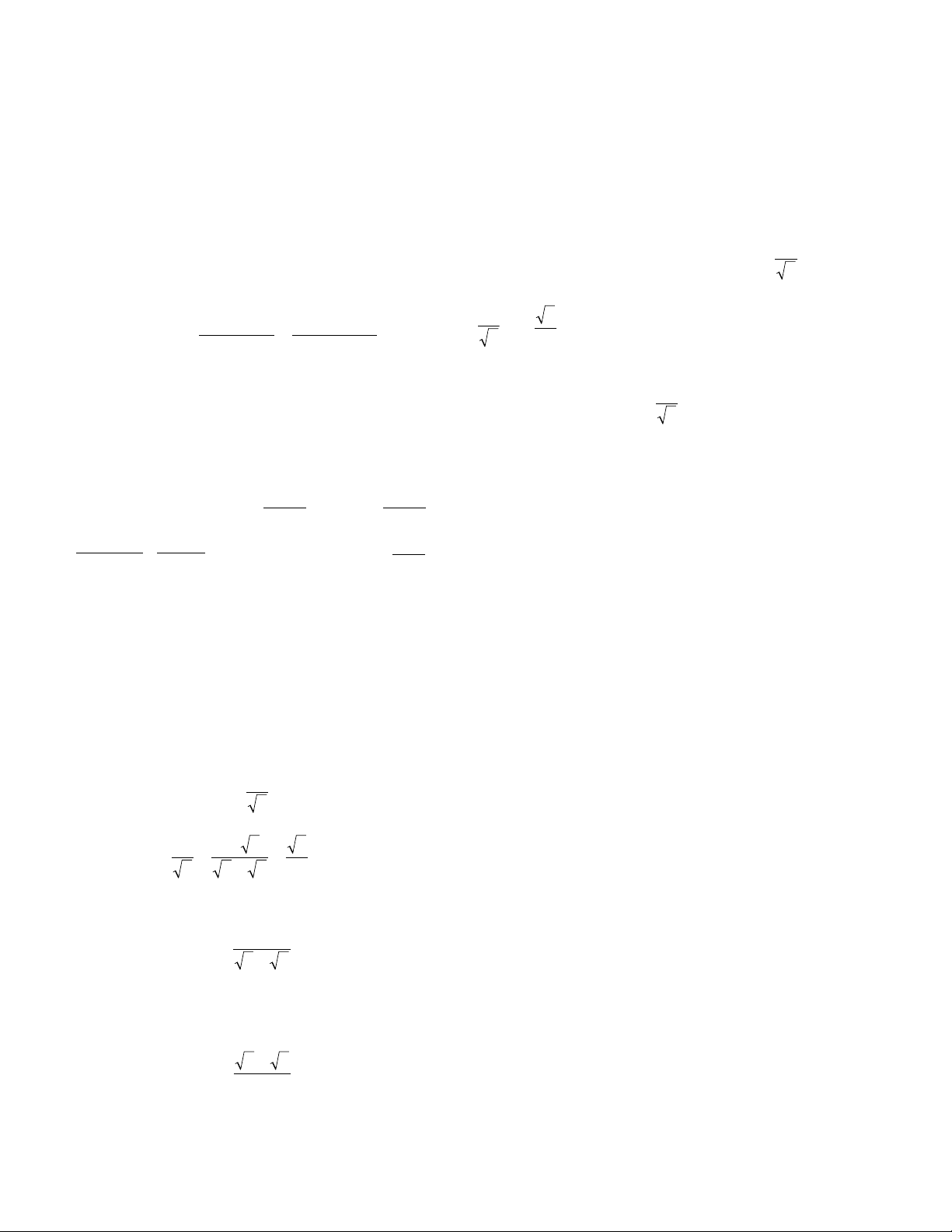
p(x)
–
q(x)
p(x)
–
1
440 rationalizing the denominator
p(x)
–
q(x)
of all real values except x= 2 and x= –2. Any single
polynomial p(x) can be regarded as the rational function
.
If, for a rational function f(x) = , the denom-
inator q(x) is zero at x= a, then the function either has
a vertical
ASYMPTOTE
at x= aor a
REMOVABLE DISCON
-
TINUITY
at x= a. In the latter case, it must be that the
numerator p(x) is also zero at x= a. For example, the
rational function , although
not defined at x= 3, equals the continuous function x–
2 at all values different from 3, and so has a removable
discontinuity at that point.
If a rational function f(x) = tends to a limit c
as x→∞or as x→–∞, then the line y= cis a hori-
zontal asymptote for f. For example, the line y= 2 is a
horizontal asymptote of . (Write =
. This approaches the value
as x→±∞.)
Every rational function can be rewritten in terms of
PARTIAL FRACTIONS
.
See also
CONTINUOUS FUNCTION
.
rationalizing the denominator The process of elim-
inating any square-root terms in the denominator of a
rational expression, without changing the value of that
expression, is called rationalizing the denominator. For
example, the quantity can be rationalized by
multiplying both the numerator and denominator by
√
–
2 to obtain: .
In general, an expression of the form
is rationalized by multiplying through by the conjugate,
√
–
a+ √
–
b, to produce:
During the 1950s and 1960s, before the advent of
pocket calculators, it was deemed necessary to always
rationalize the denominator of a numerical expression.
It has the advantage of making computations relatively
straightforward. For instance, although one can read
from a book of tables that √
–
2 is approximately
1.414, computing the approximate value of via the
process of
LONG DIVISION
is tedious. However, rewriting
as allows us to see immediately that this
quantity is simply half of √
–
2, and so has approximate
value 0.707.
Today, the quantity is regarded as a valid
expression of a numerical quantity, and there is abso-
lutely no need to rationalize the denominator. Unfortu-
nately, many high school mathematics programs still
insist on rewriting such expressions, even though the
reasons for doing so are now obsolete.
rational numbers (rationals) Any number that can
be expressed as a
RATIO
, a/b, of two integers aand b,
with b≠0, is called a rational number. For example,
2/5 and –6/2 (which is equivalent to –3) are rational
numbers. Every rational number is a fraction, and as
such, the rules for adding, subtracting, multiplying, and
dividing fractions apply to the rationals. The set of all
rational numbers is denoted Q(for quotient), and the
set of all rationals constitutes a mathematical
FIELD
.
Any real number whose decimal representation
eventually repeats in a cycle or terminates (and so can
be regarded as containing a repeated cycle of zeros) is a
rational. For example, multiplying x= 0.34 by 100
yields 100x= 34, and so x= = . Multiplying
y= 2.3181818… by 10 and by 1,000 and then sub-
tracting yields:
1000y= 2318.181818…
10y= 23.181818…
990y= 2295
establishing that y= 2295/990 = 51/22. Conversely, the
process of
LONG DIVISION
shows that every rational
number has a decimal expansion that repeats. (For
instance, in dividing 3 by 7, each remainder that appears
17
––
50
34
––
100
1
2
2
2
1
2
1
2
ab
ab
+
−
1
ab−
1
2
12
22
2
2
=×
×=
1
2
60
302
+
−=
xx
xx
x
x
65
32
65
32
+
()
−
()
=+
−
/
/
/
/
65
32
x
x
+
−
65
32
x
x
+
−
xx
x
xx
x
256
3
32
3
−+
−=−−
−
()()